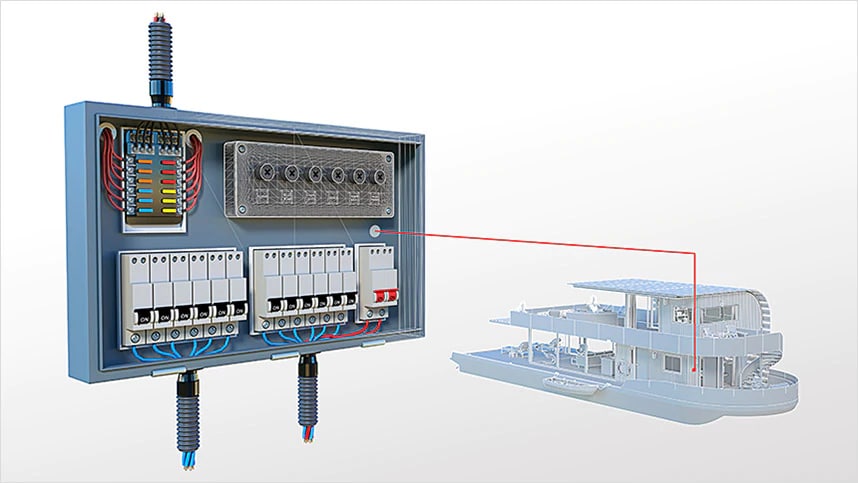Specialized Electrical Engineering Design Services for Residential and Industrial Solutions
Innovative Electric Design Solutions for Modern Infrastructure
As metropolitan settings grow increasingly complicated, including modern technologies such as clever grids and sustainable power resources ends up being paramount. These innovations not only guarantee to optimize power intake yet likewise foster strength against future needs.
Importance of Ingenious Electric Design
Ingenious electrical design plays a vital function in contemporary facilities, affecting not just efficiency yet additionally sustainability. As cities evolve and the need for energy boosts, the demand for innovative electrical systems becomes critical. These systems should not just meet present demands however also expect future development and technical innovations.
A well-executed electric design can considerably minimize energy consumption, therefore decreasing functional expenses and lessening environmental impact. By incorporating eco-friendly power sources, such as solar panels and wind turbines, cutting-edge styles can improve energy freedom and durability. Moreover, smart grid technologies enable real-time tracking and management of energy distribution, enhancing performance and lowering waste.
Security is another crucial facet of electrical design. Applying strenuous requirements and advanced modern technologies can reduce dangers related to electric failings, making sure a safe environment for services and citizens alike. Additionally, ingenious layouts help with adaptability, permitting infrastructures to incorporate arising modern technologies seamlessly.
Secret Trends in Electrical Design
As the landscape of electrical design remains to progress, numerous essential fads are shaping the future of the industry. One substantial pattern is the integration of wise technology into electric systems. The expansion of the Net of Things (IoT) has made it possible for real-time tracking and control of electrical gadgets, improving effectiveness and promoting anticipating upkeep.
One more fad is the expanding focus on modular design. This approach permits scalable and adaptable services, making it possible for infrastructure to adjust to transforming demands without extensive restorations. Additionally, making use of sophisticated simulation devices and Building Information Modeling (BIM) is becoming progressively common, improving the design process and improving collaboration amongst stakeholders.
In addition, innovations in products science are leading to the development of lighter, extra durable, and energy-efficient elements. This advancement is especially essential for high-performance structures and framework tasks.
Last but not least, there is a significant change towards data-driven decision-making - electrical engineering design services. Leveraging data analytics helps designers maximize systems for efficiency and cost-effectiveness. Together, these fads signify a transformative era in electric design, enhancing performance, sustainability, and resilience in contemporary facilities
Sustainable Power Solutions
Sustainable energy services are significantly becoming a crucial focus in electrical design, showing a more comprehensive commitment to environmental obligation and resource effectiveness. These options intend to reduce environmental influence while enhancing energy usage in numerous facilities, from household structures to huge commercial centers.
One of the primary approaches entails the combination of renewable resource important link sources, such as solar panels and wind generators, into electric systems. This not just lowers reliance on nonrenewable fuel sources but also enhances power resilience. Furthermore, ingenious energy storage systems, such as innovative batteries, enable reliable monitoring and distribution of energy, making certain that excess energy produced throughout top manufacturing can be used throughout high demand periods.
Moreover, energy-efficient design practices are being embraced to boost overall system efficiency. This consists of utilizing energy-efficient lighting, a/c systems, and wise structure modern technologies that adapt and keep an eye on power use based upon tenancy and ecological problems.
Smart Grid Technologies
The implementation of sustainable power remedies normally leads to the exploration of clever grid modern technologies, which play a pivotal role in updating electric systems. Smart grids leverage advanced interaction technologies and data analytics to improve the integrity, performance, and sustainability of electricity circulation. By integrating digital technology with traditional grid infrastructure, these systems assist in real-time surveillance, automated control, and enhanced decision-making capabilities.
Among the key features of clever grids is their capacity to suit renewable resource resources, such as solar and wind power. This flexibility not just reduces dependency on fossil gas yet likewise permits for a much more decentralized energy production version. Additionally, smart grids enable need feedback programs, where consumers can readjust their power usage based upon real-time pricing, therefore advertising energy preservation and decreasing peak load needs.
Furthermore, smart grid innovations improve grid resilience by enabling quicker identification and resolution of outages, eventually minimizing downtime. With predictive maintenance and analytics, energies can maximize procedures and boost solution delivery. As areas and cities continue to advance, smart grid innovations are important for constructing a sustainable and efficient electrical infrastructure that meets the demands of contemporary society.

Future-Proofing Framework
To ensure lasting feasibility and versatility, future-proofing framework is essential in the rapidly advancing landscape of electric design services. As technology breakthroughs and energy needs read this article change, it is vital that electrical systems are made with versatility in mind. This entails incorporating scalable remedies that can accommodate future upgrades without demanding comprehensive overhauls.

Additionally, advice sustainability needs to be a cornerstone of future-proofed styles. Using renewable energy resources, such as solar and wind, and enhancing power performance reduce reliance on nonrenewable fuel sources, aligning with global efforts to battle climate modification.
Final Thought
In final thought, cutting-edge electrical design solutions play an essential role fit contemporary framework. By prioritizing sustainability, versatility, and effectiveness, these solutions resolve the evolving demands of power systems. The integration of wise grid innovations and lasting power remedies boosts resilience and decreases operational costs. Future-proofing framework through advanced simulation tools and modular methods makes sure that electric systems remain responsive to changing demands, eventually adding to a much more lasting and energy-independent future.
A well-executed electric design can considerably decrease energy consumption, thus lowering functional expenses and minimizing environmental impact. By including sustainable energy resources, such as solar panels and wind turbines, cutting-edge styles can enhance energy freedom and durability. Additionally, cutting-edge energy storage systems, such as advanced batteries, make it possible for effective administration and distribution of energy, making certain that surplus power generated during optimal manufacturing can be utilized during high demand periods.
Wise grids enable demand feedback programs, where customers can adjust their energy usage based on real-time prices, consequently advertising power conservation and lowering peak tons demands. (residential electrical design)
As technology breakthroughs and energy needs change, it is essential that electrical systems are created with flexibility in mind.